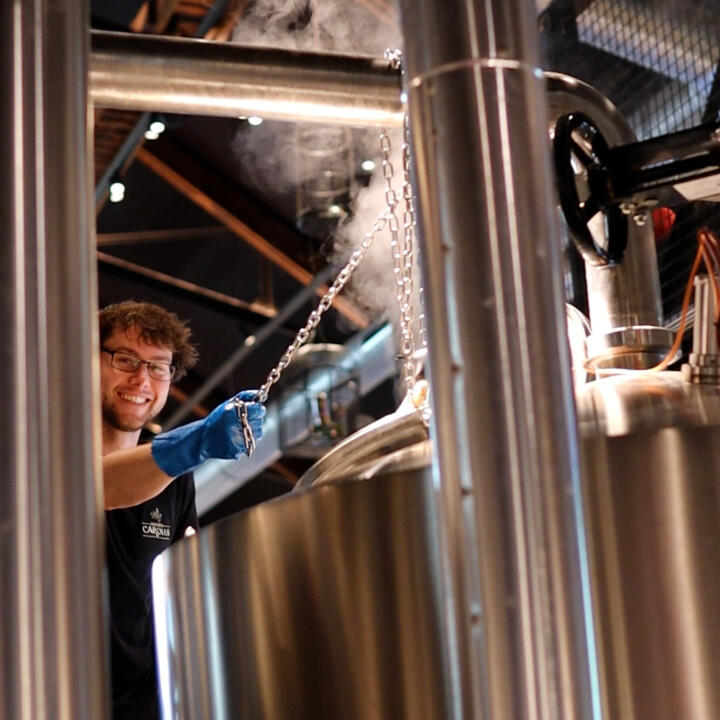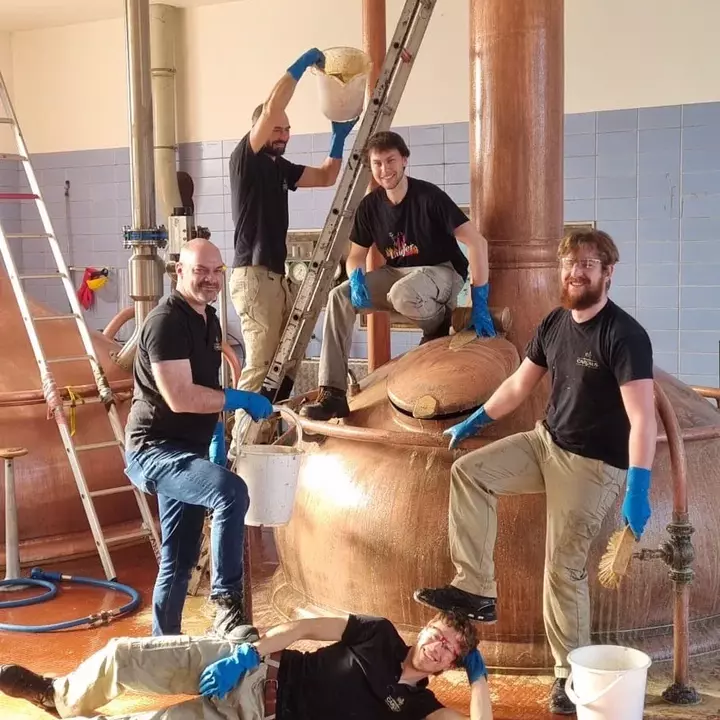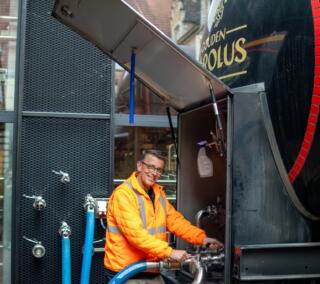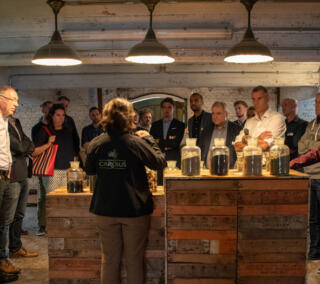Brewing Engineer
Bart
Starting as a brewer and later advancing to brewing engineer, Bart Meulepas has been working at Het Anker since 2015. But what exactly does a brewing engineer do? Find out here.
How did you end up at the brewery?
My interest in beer began when I had the opportunity to write my thesis at Biercentrum Delvaux, Belgium’s leading beer research center. In 2015, I was lucky enough to start working at Het Anker as a brewer straight out of university—I studied industrial bioengineering in Leuven. From the start, I secretly had the ambition to grow into my dream job as a brewing engineer, and after four years of happily working as a brewer, I finally made it. I reached my goal fairly quickly, and I know this is the job I want to do for the rest of my life. It’s a diverse role with a great team in an amazing company.

What does your job involve?
As a brewing engineer, I ensure that the brewing team knows exactly what and how much needs to be brewed each day. I also oversee production in our fantastic microbrewery, Batteliek. Additionally, I apply my technical and biochemical knowledge daily—not just to develop new beers but also to design brewing installations, set up automation processes, and more. In recent years, we’ve focused heavily on sustainability and energy efficiency. Together with the brewing team, we tackle every brewing-related challenge that comes our way.
“This is the job
I want to do
for the rest of my life.”
You also help create beer recipes. How does that process work?
At Het Anker, we always start with a strong story when developing a new beer. In various workgroups, consisting of colleagues from different departments, we brainstorm concepts, flavors, and recipes. The Indulgence series is a great example of this. My job is to translate the story into specific brewing parameters. If we need a biscuit or caramel flavor, I search for well-roasted malts that fit the profile. A few years ago, we released a limited-edition cacao beer. Since I knew nothing about cacao—a rather unusual beer ingredient—I took lessons with a chocolatier in Mechelen to learn how good cacao should taste. This knowledge helped me create the perfect recipe. Once a recipe is finalized, we brew a small test batch of about 200 liters. If the test batch is approved, we scale up production to batches of 25,000 to 35,000 liters.
Do you prefer working on new beer creations or improving well-known classics like Gouden Carolus?
Both are exciting challenges! Just because a recipe is perfected doesn’t mean the beer will taste identical every time. We work with living ingredients: yeast behaves differently in each batch, hops and grains vary slightly in flavor, and so on. Every week, beer comes out of the refermentation chamber (a heated warehouse where bottle refermentation takes place), ready for sale. Together with the brewing and quality team, we conduct tastings one or two times a week to ensure the beer meets our standards and can be released. It's a continuous process of fine-tuning each batch to maintain the quality and taste of our iconic beers.

What’s your favorite spot in the brewery?
I love being in the control room. It might sound a bit nerdy, but from there, I can monitor all brewing processes on the computer and oversee the entire brewery at a glance. Whether it’s wort boiling, beer fermenting, or a batch being filtered, I love seeing everything happen at once!











